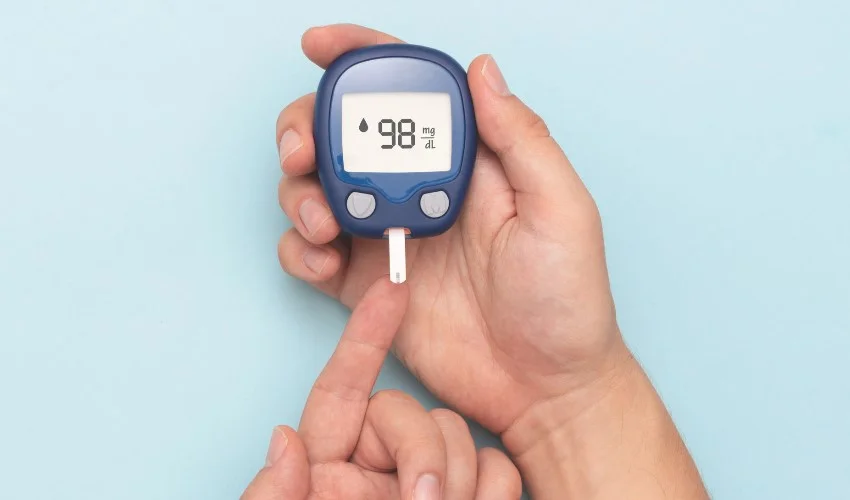Living with Type 2 diabetes presents individuals and their caregivers with a complex challenge that extends beyond physical health. This chronic condition necessitates a comprehensive and proactive approach to management, with dietary choices playing a critical role. Among the many strategies available, the Diabetes Plate Method stands out as a simple yet powerful tool that empowers individuals to make informed nutritional decisions. In this detailed exploration, we will delve into the core principles of the Diabetes Plate Method, delve deeper into its numerous benefits, and highlight its role in enhancing the quality of life for those managing Type 2 diabetes.
Understanding Type 2 Diabetes
Type 2 diabetes is characterized by the body’s inability to efficiently use insulin, a hormone responsible for regulating blood sugar levels. This results in elevated blood sugar levels, which, if left uncontrolled, can lead to a range of complications, including heart disease, nerve damage, kidney problems, and more. The impact of Type 2 diabetes extends beyond physical health, affecting emotional well-being, social interactions, and overall quality of life.
The Importance of Diet in Diabetes Management
Diet is a cornerstone of managing Type 2 diabetes. The foods we consume directly influence blood sugar levels, making mindful eating choices an essential aspect of maintaining stable glucose levels. In addition, a well-balanced diet contributes to weight management, which further aids in controlling diabetes and reducing the risk of associated complications.
What is the Diabetes Plate Method?
The Diabetes Plate Method offers a structured approach to meal planning that simplifies complex dietary considerations. At its core, the method involves dividing a standard dinner plate into three sections, each representing a different food group:
Non-Starchy Vegetables (50%): Fill half of the plate with non-starchy vegetables such as spinach, broccoli, peppers, and cauliflower. These vegetables are rich in vitamins, minerals, and fiber, and they have a minimal impact on blood sugar levels.
Lean Proteins (25%): Allocate a quarter of the plate to lean proteins like poultry, fish, tofu, or legumes. Protein is essential for building and repairing tissues, and it has a negligible effect on blood sugar.
Whole Grains or Starchy Vegetables (25%): The remaining quarter of the plate is reserved for whole grains or starchy vegetables like brown rice, quinoa, sweet potatoes, or whole-grain bread. These carbohydrates provide energy and fiber, influencing blood sugar levels more gradually.
Benefits of the Diabetes Plate Method
The Diabetes Plate Method offers a range of benefits that contribute to improved diabetes management and an enhanced quality of life:
Simplicity and Practicality
The method’s straightforward approach makes it accessible to individuals from all walks of life. Its visual representation simplifies portion control and aids in making mindful food choices.
Blood Sugar Regulation
The core principle of portion control, especially with carbohydrates, helps regulate blood sugar levels. By balancing carbohydrate intake with proteins and non-starchy vegetables, individuals can mitigate blood sugar spikes and crashes.
Weight Management
Maintaining a healthy weight is paramount for individuals with Type 2 diabetes. The Diabetes Plate Method’s emphasis on balanced meals aids in weight management, reducing the risk of insulin resistance and other obesity-related complications.
Heart Health
The method’s focus on lean proteins, whole grains, and vegetables aligns with heart-healthy dietary recommendations. This approach can reduce the risk of cardiovascular complications that often accompany diabetes.
Implementing the Diabetes Plate Method
To effectively implement the Diabetes Plate Method into daily life, consider the following steps:
Consult a Healthcare Professional: Before making any major dietary changes, consult a registered dietitian or healthcare provider. They can tailor the method to your individual needs, considering factors such as medication, activity level, and personal preferences.
Diversify Your Choices: Experiment with a variety of non-starchy vegetables, lean proteins, and whole grains to keep your meals interesting and nutritionally rich. This not only enhances your nutrient intake but also prevents culinary monotony.
Portion Control Awareness: While the Diabetes Plate Method simplifies portion control, it’s essential to develop an awareness of portion sizes beyond the plate. Over time, this awareness becomes second nature, helping you maintain a balanced diet.
Mindful Carbohydrate Management: While the method categorizes carbohydrates, remain mindful of the specific carbohydrate content of foods. Factors like glycemic index and fiber content can influence how foods impact blood sugar.
Combination Foods in Diabetes Plate Method
While our meals often consist of combination foods like soups, casseroles, sandwiches, pizza, and pasta that merge various food types, the plate method can still guide their preparation and portioning. By breaking down the components of these combination dishes, you can identify their respective categories on the plate. Take a pizza slice, for instance: the crust represents carbohydrates, the cheese and meats signify proteins, while the tomato sauce and toppings align with nonstarchy vegetables. When crafting such dishes, aim to maintain the plate method’s proportions. For a pizza aligned with this approach, opt for a thin crust to minimize carbohydrate content, prioritize vegetable toppings or lean meats, and consider pairing with a side salad to ensure half your meal consists of nonstarchy vegetables.
Evidence-Based Support
The effectiveness of the Diabetes Plate Method is substantiated by scientific research and clinical studies. A study published in the “Journal of the Academy of Nutrition and Dietetics” found that the method improved glycemic control and aided weight loss in individuals with Type 2 diabetes1. Similarly, research published in the “Diabetes Care” journal demonstrated that the method led to significant post-meal blood sugar improvements2.
The Diabetes Plate Method serves as a beacon of practicality and empowerment for individuals managing Type 2 diabetes and their caregivers. Its simplicity, supported by rigorous research, underscores its significance in diabetes management. By embracing the principles of the Diabetes Plate Method, individuals take control of their dietary choices, fostering steady blood sugar levels, effective weight management, and ultimately elevating their quality of life.
Within platforms like Care4Sugar, a comprehensive resource dedicated to Type 2 diabetes, individuals find a supportive community that shares experiences, knowledge, and insights. Together, we navigate the challenges posed by diabetes, armed with information and camaraderie, moving towards healthier and happier lives.




